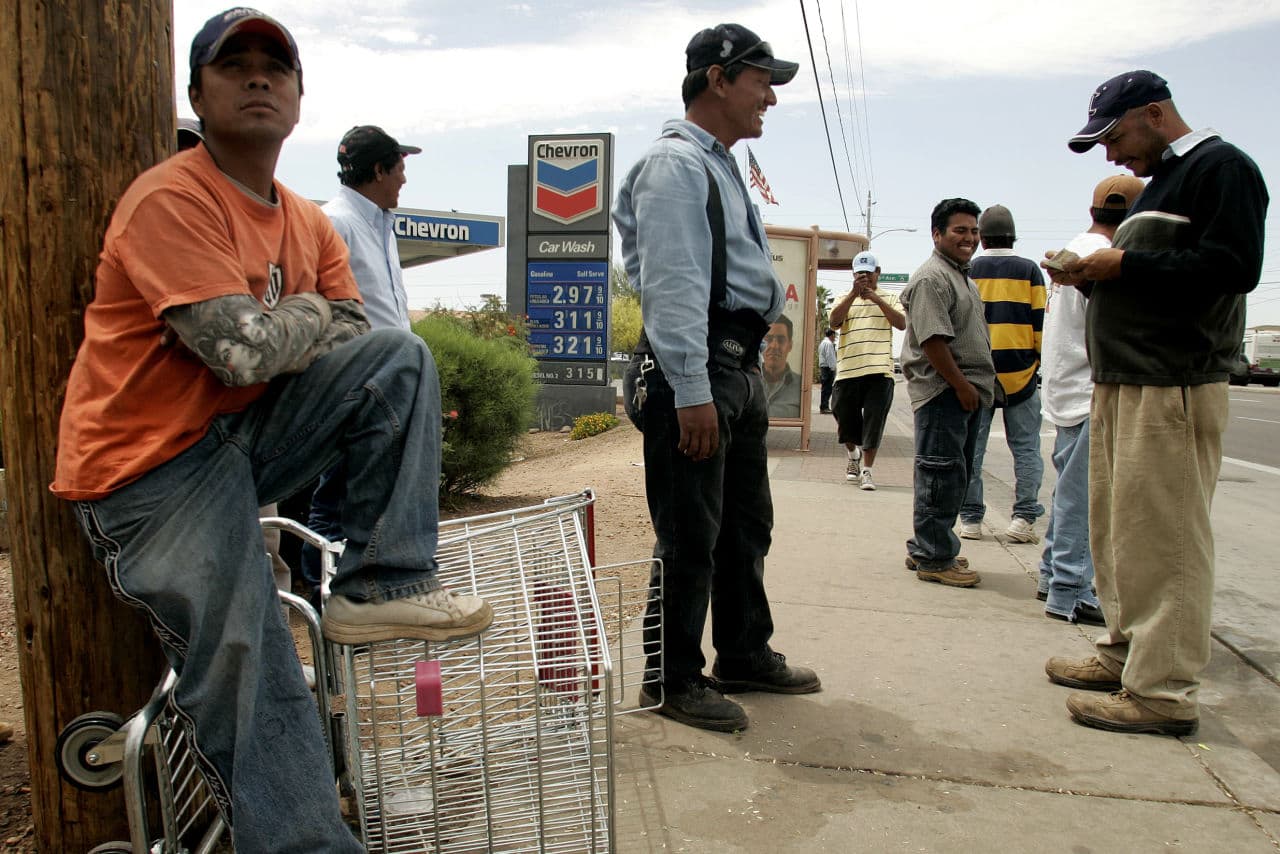Advertisement
The U.S. Economy Without Undocumented Workers
ResumeDonald Trump says he wants millions of immigrants out. What happened when Arizona cut its undocumented worker population by almost half? We’ll ask.

Lots of talk about building a wall in the Republican presidential primary. And from Donald Trump and sometimes more, about shipping out undocumented workers. By the millions. What would the American economy look like if that came to pass? “Get tough” Arizona may tell us. Undocumented worker numbers are down 40 percent in Arizona. How has that worked out? This hour On Point, the Arizona story. When undocumented workers go away.
-- Tom Ashbrook
Guest
Bob Davis, senior editor at The Wall Street Journal. He covers economic issues, especially those that will play out in the presidential campaign. (@bobdavis187)
Magnus Lofstrom, a labor economist and senior fellow at the Public Policy Institute of California, a non-partisan think tank. He is also a former professor of economics at University of Texas in Dallas.
Steven Camarota, director of research for the Center for Immigration Studies.
From Tom's Reading List
The Wall Street Journal: The Thorny Economics of Illegal Immigration — "Few issues in the presidential campaign are more explosive than whether and how much to crack down on illegal immigration, which some Republican candidates in particular blame for America’s economic woes. Arizona is a test case of what happens to an economy when such migrants leave, and it illustrates the economic tensions fueling the immigration debate."
Pew Research Center: 5 Facts about Mexico and Immigration to the U.S. — "U.S. immigration from Latin America has shifted over the past two decades. From 1965 to 2015, more than 16 million Mexicans migrated to the U.S. in one of the largest mass migrations in modern history. But over the past decade, Mexican migration to the U.S. has slowed dramatically. Today, Mexico increasingly serves as a land bridge for Central American immigrants traveling to the U.S."
Center for Immigration Studies: Most of the Gains from Immigration go to Immigrants Themselves, Not to Natives — "Most GDP gains from immigration are captured by the immigrants themselves. To see that more clearly, imagine that the United States clones itself. From our population of 323 million, we create another 323 million people whose distribution of skills exactly mirror that of the existing population. The clones also come with a stock of capital equipment identical to the country's pre-existing capital. By doubling labor and capital, we double our GDP. "Cloning is essential to our economy," advocates declare. "Without it, we would be only half as rich as we are now." Is that argument persuasive?"
Forbes: Arizona-Style Immigration Laws Hurt the Economy — "Forcibly removing peaceful unauthorized immigrants from the U.S., separating them from their families, property, and jobs, to satisfy arcane labor market regulations created by Progressive politicians, is an appalling indecency. It also inflicts significant economic harm. Arizona’s immigration laws have drastically damaged its economy since mid-2007. The humanitarian arguments may leave those who complain the loudest about unauthorized immigration unmoved, but the supporters of Arizona style immigration laws might be persuaded by the economic costs."
This program aired on February 17, 2016.